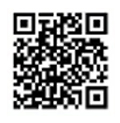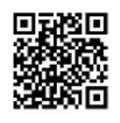目的探讨过敏性紫癜(HSP)患儿发生紫癜性肾炎(HSPN)的危险因素,探讨患儿中性粒细胞绝对值/淋巴细胞绝对值(NLR)、血小板计数/淋巴细胞绝对值(PLR)的变化及根据NLR、PLR预测HSPN发生的价值。方法选取2016年1月至2019年10月在贵州医科大学附属医院确诊的HSP患儿174例作为研究对象,根据疾病是否累及到肾脏将患儿分为HSP组(94例)和HSPN组(80例)。比较两组患儿的一般情况及临床、实验室检测结果;对影响HSP患儿发生HSPN的因素进行多因素Logistic回归分析;绘制NLR、PLR及NLR联合PLR诊断HSPN的ROC曲线并进行分析。结果HSPN组患儿WBC、RBC、ANC、MPV、RDW、NLR、IgA、IgM水平均显著高于HSP组,而PLT、PLR、ALB、IgG水平均显著低于HSP组,差异有统计学意义(P<0.05)。多因素Logistic回归分析结果显示,WBC、ANC、MPV、NLR、IgA、IgM是HSP患儿发生HSPN的危险因素,而PLT、PLR、ALB、IgG是HSP患儿发生HSPN的保护因素(P<0.05)。根据NLR诊断HSPN的AUC为0.695,敏感度为60.0%,特异度为71.3%;根据PLR诊断HSPN的AUC为0.603,敏感度为39.4%,特异度为80.0%;根据NLR联合PLR诊断HSPN的AUC为0.776,敏感度为73.8%,特异度为68.1%。结论影响过敏性紫癜患儿发生紫癜性肾炎的危险因素较多,WBC、ANC、MPV、NLR、IgA、IgM是HSP患儿发生HSPN的危险因素,而PLT、PLR、ALB、IgG是HSP患儿发生HSPN的保护因素,NLR、PLR与患儿HSPN的发生密切相关,NLR联合PLR检测诊断HSPN具有一定的价值。
当前位置:首页 / 过敏性紫癜患儿发生紫癜性肾炎的危险因素及NLR、PLR变化分析▲
论著
|
更新时间:2020-09-03
|
过敏性紫癜患儿发生紫癜性肾炎的危险因素及NLR、PLR变化分析▲
Analysis of the risk factors for children with Henoch-Schonlein purpura occurring Henoch-Schonlein purpura nephritis and their changes of NLR and PLR
内科 202015卷04期 页码:387-391+395
作者机构:1 贵州医科大学,贵阳市550001;2 桂林医学院附属医院综合科,广西桂林市541001;3 贵州医科大学附属医院,贵阳市550001
基金信息:▲基金项目:贵州省科技计划项目(黔科合平台人才〔2016〕5501);贵阳市科技计划(筑科合同〔2016100〕)
*通信作者:曹煜,贵州医科大学附属医院,电子邮箱 2692327139@qq.com
- 中文简介
- 英文简介
- 参考文献
ObjectiveTo explore the risk factors for children with Henoch-Schonlein purpura (HSP) occurring Henoch-Schonlein purpura nephritis (HSPN), and to explore the changes of neutrophil to lymphocyte ratio (NLR), platelet to lymphocyte ratio (PLR), and according to the value of NLR and PLR to predict the occurrence of HSPN. MethodsA total of 174 children with HSP confirmed in the Affiliated Hospital of Guizhou Medical University from January 2016 to October 2019 were selected as the research objects. The children were divided into HSP group (94 cases) and HSPN group (80 cases) according to the presence of kidney involvement. The general conditions, clinical and laboratory test results were compared between the two groups; multivariate logistic regression analysis was performed on the factors affecting the occurrence of HSPN in children with HSP; the ROC curve of NLR, PLR and NLR combined with PLR diagnosing HSPN was drawn and analyzed. ResultsCompared to the HSP group, children in the HSPN group obtained significantly higher levels of WBC, RBC, ANC, MPV, RDW, NLR, IgA, IgM, whereas significantly lower levels of PLT, PLR, ALB, and IgG, following statistically significant differences (P<0.05). Multivariate logistic regression analysis results showed that WBC, ANC, MPV, NLR, IgA, IgM were the risk factors for children with HSP occurring HSPN, while PLT, PLR, ALB, and IgG were the protective factors for HSPN in children with HSP (P<0.05). Based on NLR diagnosing HSPN, the AUC, sensitivity, and specificity were 0.695, 60.0%, and 71.3%, respectively; the AUC for the diagnosis of HSPN based on PLR was 0.603, the sensitivity was 39.4%, and the specificity was 80.0%; the AUC for the diagnosis of HSPN based on NLR combined with PLR was 0.776, the sensitivity was 73.8%, and the specificity was 68.1%. ConclusionThere are many risk factors for children with HSP in occurring HSPN. WBC, ANC, MPV, NLR, IgA, IgM are risk factors for HSPN in children with HSP, while PLT, PLR, ALB, and IgG are the protective factors for HSPN in children with HSP. NLR and PLR are closely related to the occurrence of HSPN in children, and the detection of NLR combined with PLR in diagnosing HSPN has a certain value.
-
无




 注册
注册 忘记密码
忘记密码 忘记用户名
忘记用户名 专家账号密码找回
专家账号密码找回 下载
下载 收藏
收藏
